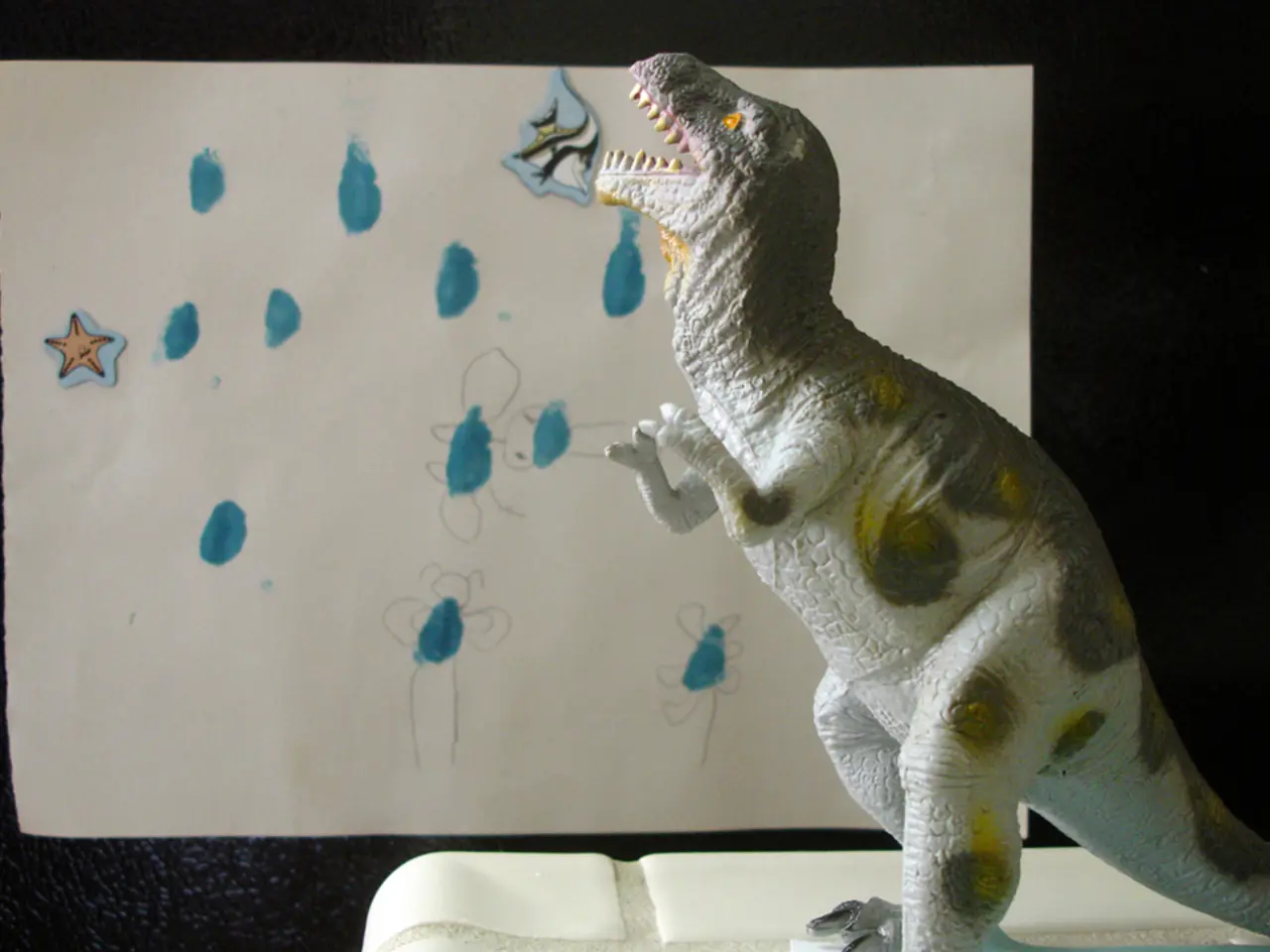Sauropod diet and migration habits unveiled through analysis of fossilized dinosaur teeth
New research has shed light on the lives of the giant herbivores that roamed the Earth during the Jurassic period. By analyzing high-resolution 3D scans of sauropod teeth from fossil sites in Portugal, the United States, and Tanzania, scientists have uncovered intricate details about their feeding behavior, migration patterns, and environmental conditions.
The study, published in the journal Nature Ecology and Evolution, was conducted by researchers from the Leibniz Institute for the Analysis of Biodiversity Change, the Free University of Berlin, the Christian-Albrechts-University of Kiel, and the University of NOVA Lisbon. The original publication can be found here.
Microscopic scratches on sauropod teeth reveal a wealth of information about their dietary habits. These tiny wear marks reflect the type of food sauropods consumed shortly before their death, indicating whether they were generalist or specialist feeders. Variation in scratch patterns across sites also suggests differences in diet linked to geographic location and possible migratory behaviors.
To gain a more comprehensive understanding of sauropods' lives, the researchers combined microscopic tooth wear with oxygen isotope analysis. Oxygen isotopes trapped in tooth enamel record atmospheric CO2 levels and climate, contextualizing the feeding evidence within the broader paleoenvironment. Together, these approaches provide a multi-dimensional view of how sauropods lived, moved, and interacted with their ecosystems during the Jurassic.
The study found distinct wear patterns among sauropod teeth from different fossil sites. For example, one group showed variable wear indicating a generalist diet, while another had uniform wear suggesting migration to seek specific preferred food sources year-round. This helps scientists infer not only dietary preferences but also seasonal or permanent movement behaviors.
Flagellicaudatan sauropods like Diplodocus showed highly variable wear patterns, suggesting diverse food sources and a generalist feeding behavior. In contrast, Camarasaurus from Portugal and the USA exhibited consistent wear patterns, indicating a seasonal feeding behavior. Titanosauriforms from Tanzania showed strong and complex wear due to quartz sand-contaminated food in the semi-arid Tendaguru Formation environment.
The study underscores the importance of interdisciplinary collaboration between paleontology, modern technology, and ecology. Researcher Emanuel Tschopp highlights the significance of the study, stating that combining these disciplines opens fascinating insights into past worlds.
Further analyses are planned, including studying the feeding habits of sauropod juveniles and the adaptation of small species like Europasaurus from Lower Saxony. The study provides valuable insights into the life history and ecology of sauropods over 150 million years ago.
As researcher Daniela Winkler notes, each new sample gives them another puzzle piece, and their understanding of the past is improving as their tools do. The study's findings offer a unique window into the lives of these majestic creatures, providing a glimpse into the world they inhabited during the Jurassic period.
Read also:
- Overweight women undergoing IVF have a 47% higher chance of conceiving naturally post-weight loss
- Bonsai Trees from Evergreen Species: Exploring Growth Characteristics & Distinct Qualities
- What temperatures may make walking your canine companion uncomfortable?
- Alcohol consumption and the connection to esophageal cancer: An exploration of links and potential hazards






